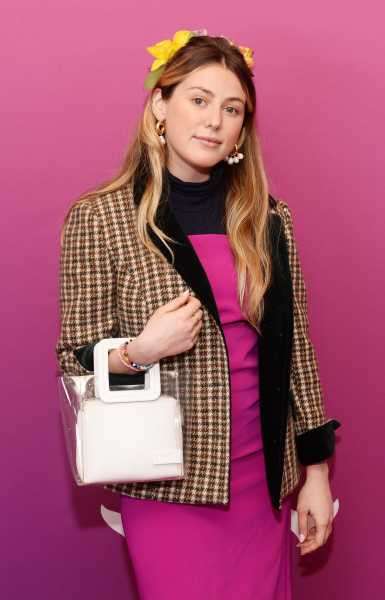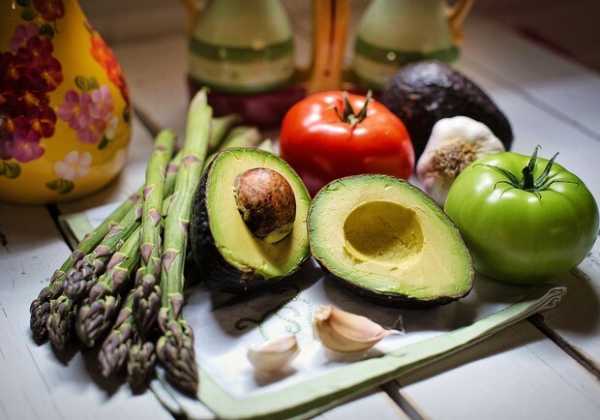
On Tuesday night, the internet exploded over an essay. Specifically, the internet exploded over a confessional personal essay written by a non-famous woman, as if it were 2014 all over again.
The essay in question was published by New York Magazine’s The Cut. Its author is a freelance writer named Natalie Beach, and it describes Beach’s friendship with the Instagram influencer Caroline Calloway, who went viral earlier this year when her planned tour became a Fyre Fest-style debacle. And although nothing in that sentence might sound like it’s worth tons of attention, as soon as Beach’s essay dropped, many people online sat up and took notice.
Fans and hate-followers alike took sides on Reddit and in the captions of Calloway’s own Instagram posts. “Caroline Calloway” trended on Twitter. The news made Jezebel and Cosmo. “This was… quite a white girl journey,” noted celebrated author Roxane Gay. Feminist writer Lara Witt used the essay as the basis of a Twitter thread about racial beauty standards.
That’s because Beach’s essay doesn’t just stand on its own. It’s the latest chapter in a story that’s been building arguably since 2013, when Caroline Calloway first started to become internet famous. And that story works with all of the internet’s favorite tropes: fairy tale pictures concealing dark realities, performed identities, and scams galore.
Now, with Natalie Beach’s essay, that story has reached a climax. The essay chronicles Beach’s time with Calloway both before and after viral fame, and makes the case that Beach herself was responsible for building Calloway’s brand. In the process, it brings a deeply human element to the already juicy Calloway story.
Here is everything you need to know to understand Caroline Calloway, Natalie Beach, and why on Earth anyone cares so much about either one of them.
Who is Caroline Calloway?
Explaining how Caroline Calloway became internet famous is a little tricky, because she’s not a classic celebrity. She’s not even really a classic Instagram influencer, although Instagram is where her story begins.
Caroline Calloway first found a following on Instagram in 2013. She was an American student going to college at Cambridge, and she frequently posted photos of her fairy tale life there: studying art history in a chapel, drinking champagne on the roof of a castle, going to balls and flirting with impossibly charming boys. These photos were perhaps not wildly accurate as an expression of what life is actually like at Cambridge, but as an aspirational Instagram fantasy, they were deeply entertaining.
Calloway’s biggest selling point wasn’t her photos, though: It was their captions. They were all paragraphs-long, and taken together they formed a kind of memoir, a story of Calloway’s life in Cambridge, her coming of age, and her relationship with her ex-boyfriend Oscar.
Today, the long Instagram caption has become trendy for celebrities and influencers alike. Starting around 2017, many prominent Instagrammers began to veer away from the platform’s traditional focus on slick, aspirational photos and into something that looks more like WordPress-era blogging: long, confessional captions next to a vulnerable-looking photo. Lena Dunham does it, and so does Sophie Gray.
But in 2013, when Calloway was on the come-up, the idea of writing a blog post in an Instagram caption was new and fresh. It made her appear almost uniquely vulnerable: She was just a girl, she seemed to be telling her followers, trying to make it through her life in the beautiful, dangerous world. And her followers could come along into that world with her. They could be her best friends.
By 2015, Calloway had over 300,000 followers on Instagram. She announced that she had always planned to write a book, and that she wanted to use her Instagram memoir as the basis for one. Literary agent Byrd Leavell signed on to represent her. Calloway’s book proposal went to auction, and it was sold to Flatiron Books in what the trade publication Publishers Marketplace described as a “significant” deal, meaning that it went for somewhere between $251,000 and $499,000. In perhaps a sign of what was to come, Calloway told press that her advance was a flat half-million dollars.
But the promised book never materialized. Leavell, whose career credits include successfully getting books out of charismatic train wrecks (his client list boasts drugs and beauty writer Cat Marnell, professional frat bro Tucker Max, and Donald Trump) couldn’t seem to pull a book out of Calloway. Calloway began posting ominously on Instagram about her drug usage and patterns of self-destruction. “I’m going to teach you how to get a book deal in the most self-harming, reckless way a twenty-three-year-old can,” she wrote.
Finally, in September of 2017, Calloway announced that the book proposal she had sold was too sexist, too focused on boys, and she was no longer interested in writing it. “Starting now this love story I’ve been telling you on Instagram will also be a true story, in all of the ways, not just the ways I think publishers will buy,” she wrote. “It’s a love story about a girl and her creativity.”
In the meantime, she wrote in her Instagram Stories, she owed her publisher the $100,000 of her advance that she’d already been paid — but she had spent it all already. The publisher was being super understanding, she said. She was putting her book proposal up for sale on her Etsy store.
Calloway spent the next year in relative obscurity as a minor Instagram influencer, selling merchandise through her Etsy shop, giving occasional interviews, and posting mostly on Instagram Stories rather than to her main feed. (In now-deleted posts, she offered to create sponsored content — though she seems to have had little success at it.) But all of that changed in December of 2018, when Calloway began advertising for what she was calling a world tour of “creativity workshops,” and culture writer Kayleigh Donaldson wrote a Twitter thread about it.
According to Calloway’s event description (now deleted, but preserved in an article on The Cut), the workshop would be a place for her fans to talk about creativity, art-making, and building an Instagram brand. Each workshop would be four hours long, although Calloway would be present for only three of those hours (the first hour would be a chance for attendees to make new friends). Attendees would receive personalized journals, vegan lunches, and care packages customized just for them that would include mason jar gardens. They would drink coffee or tea with oat milk. They would make fresh orchid crowns to wear in their hair. The tour would visit 10 US cities before moving to Europe. Attending a workshop would cost $165 per ticket.
But Calloway began selling tickets a month before the tour was scheduled to begin, without yet having done any of the organizational work. She had no venues booked. In a moment that became emblematic of the whole debacle, she ordered 1200 mason jars from which she planned to make those mason jar gardens, only to find that she had nowhere to put them once they arrived on a giant pallet to her apartment.
Calloway eventually announced plans to hold all her workshops in New York, then canceled those plans after fans who had already bought tickets for events she had advertised in other cities begged her to come to them. And she had no clear mechanisms in place to offer refunds.
“This woman is a blatant scammer who’s now organizing a WORLDWIDE TOUR with this ‘workshop’ she admits she wrote in one day,” Donaldson tweeted. “I think it’s categorical bullshit that nobody is talking about & that we glorify this ‘influencer’ nonsense.”
By the time the tour began in January of 2019, Donaldson’s thread had gone viral — which meant that spectators on the internet were watching with entranced delight as the tour began to fall apart.
At the workshops that Calloway did hold, fans sat on the floor, ate salad (reportedly “damn good” according to one attendee, although another declared it terrible and over-salted), and were given empty mason jars and packets of wildflower seeds. In lieu of making orchid crowns, they were given the opportunity to put a single flower in their hair for a photo op. They then had to return the flower.
“The Creativity Workshop by Caroline Calloway ascended into failed influencer-event heaven,” wrote Madison Malone Kircher for the Cut. “I imagine the ghost of Fyre Festival met it at the gates.”
Amidst deafening schadenfreude from the internet, Calloway canceled the tour and announced that she was refunding all her attendees. Multiple fans said they had trouble getting their money back from Calloway after that announcement.
“To see the absolute disdain with which Calloway treats her fans for wanting the bare minimum she promised them was not a pleasant sight,” Donaldson wrote at Pajiba. “Watching Calloway spin broken promises, gaslighting, and a complete lack of concern for both her fans and her ‘business’ as a sign of her ‘authenticity’ revealed so much about the way we have made that word utterly meaningless.”
The creativity workshop tour was an infamous wreck of an event — but Calloway, undeterred, marshaled it into a new online identity for herself.
“I leaned in to my scarlet scam,” she explained at Refinery29, citing Reputation-era Taylor Swift as her inspiration. She started a new tour and called it “The Scam.” She made scam-branded merchandise for fans to buy, including, briefly, a T-shirt that read “Stop hate-following me, Kayleigh.” (Calloway would later claim that she took the shirt down out of concern about Donaldson’s mental health, but in fact Threadless pulled it for violating their targeted harassment policy.) She started posting more and more on her Instagram’s main feed again. Calloway was still just a girl doing her best to make it through the dangerous, beautiful world, she seemed to be saying — and if she made a few mistakes along the way, well, that only made her more radically vulnerable.
That’s the point at which Caroline Calloway became inescapable in certain corners of the internet, including the corners where New York journalists post. Without my ever following Calloway or anyone connected to her, over the course of this year, my various social media feeds have begun to fill themselves with periodic updates about her life. A journalist had gone undercover on Calloway’s new tour! Calloway was transitioning into selling hand-painted posters! Cat Marnell thought Calloway was still on Adderall!
It’s as though, for the past nine months, all of New York media has been unable to look away from the sheer spectacle of Caroline Calloway, transfixed half in loathing and half in admiration. And it’s been unable to make up its collective mind about a single, fundamental question: Is Caroline Calloway a well-meaning but messed-up young person who just wanted to support herself through social media and got in way over her head? Or is she a malicious scammer who willfully exploited her fans’ good faith for some easy cash?
Who is Natalie Beach?
Natalie Beach appears on occasion in Calloway’s Cambridge-era Instagram posts as Calloway’s traveling buddy and as the “friend-editor” who is reading over drafts of Calloway’s book-in-progress. As Calloway spiraled, between 2015 and 2017, Beach disappeared from Calloway’s feed — until last week, on September 5, 2019, when Calloway made an emotional new post.
“This afternoon I found out that one of the two people I have hurt the most in this world will be publishing an essay about our friendship for The Cut,” Calloway wrote, and with that she set into motion a breathless and overwhelming hype cycle.
This kind of story, after all, was what Calloway cut her teeth on. Her whole thing is posting fragmented bits of memoir about an emotional relationship, and doling them out over a series of photos of an aspirational and inaccessible world. That’s what she knows how to get her audience invested in.
In 2013, Calloway’s chosen world was a fantasy version of Cambridge and the relationship was a romance. Now, it is the flower-crowned and whimsical milieu of the social media influencer — and with this new post about Natalie, the relationship is a fractured best friendship. Calloway’s audience, hate followers or no, became deeply invested.
In a series of Instagram posts made over the week that followed, Calloway described Beach as a close friend who she met at a writing class at NYU before she transferred to Cambridge. Beach taught Calloway how to write, Calloway says. Beach co-wrote and edited Instagram captions for her; she also co-wrote Calloway’s book proposal. She was the best writer Calloway had ever known. And Calloway said she hurt Beach deeply when she was an active drug addict, and as a form of repayment, she wanted to make Beach’s essay about their relationship into the biggest deal she possibly could.
Calloway was also, she added, deeply hurt by the idea of a former best friend betraying her confidence. But that was okay. She deserved it.
“I’ve done everything in my limited power to set the volleyball of this essay at the net so Natalie can spike it down,” she wrote on September 7. “Let’s just fucking go.”
My Twitter feed began to fill itself with anticipatory posts. When was this fucking essay going to drop?
On Tuesday night — September 10 — it finally arrived.
What does this essay even say?
As advertised, Beach’s essay covers the seven-year story of her friendship with Calloway and its subsequent disintegration.
The friendship comes first, with breakneck speed. The two meet at age 20 at NYU; they are rapidly enchanted by one another, and their power dynamic is set early on. Beach describes going out to dinner with Calloway and spinning out stories about what the movie of Calloway’s life will look like while Calloway plies her with expensive bar food and calls her a genius. Each seems to offer something the other wants: Beach falls in love with Calloway’s wealth, glamour, and charm — and Calloway falls in love with Beach’s admiration, and with her ability to tell stories in which Calloway is the hero.
A year into their friendship, Calloway starts posting on Instagram and rapidly racks up followers. Beach offers to help edit her posts as a way to pay Calloway back for bailing Beach out of an expensive travel emergency, she says, and she soon falls in love with it.
“I believed Caroline and I were busting open the form of nonfiction,” she writes. “Instagram is memoir in real time. It’s memoir without the act of remembering. It’s collapsing the distance between writer and reader and critic, which is why it’s true feminist storytelling, I’d argue to Caroline, trying to convince her that a white girl learning to believe in herself could be the height of radicalism (convenient, as I too was a white girl learning to believe in herself).” Those talking points would later become part of the narrative Calloway built around the power of her Instagram storytelling when she got her book deal.
And according to Beach, when Calloway got that book deal, it was largely off of Beach’s writing: Calloway would send Beach “raw notes” for a chapter, and Beach would “craft it into a legible narrative.” Calloway promised Beach 35 percent of the advance, but it was understood that Beach would keep her name off the finished product — until Calloway began to spiral into her Adderall addiction, and Beach says she eventually recognized that the book was never, ever going to happen.
Since the essay dropped, Calloway has updated her Instagram’s main feed more than two dozen times and shows no sign of stopping. Mostly, she’s posting screencaps of the old posts Beach worked on and adding Beach’s name to the captions. “It’s a relief to give these captions [the credit] they deserve,” she writes.
Beach makes a few explosive claims about Calloway over the course of her essay. In addition to arguing convincingly that the distinctive voice Calloway built her brand on was at least in part actually Beach’s, she also reveals that Calloway’s advance was much smaller than she’d previously claimed ($375,000 rather than $500,000, although that’s still plenty sizable for a debut). More dramatically, Beach says that Calloway’s giant Instagram following wasn’t the result of organic word of mouth. She built it the old-fashioned influencer way, by buying followers, so that she could prove she had the numbers she needed to get a book deal. Writes Beach:
But while those claims are damaging to the Caroline Calloway brand of authenticity and vulnerability at the expense of all else, they’re not the focus of the essay — or of the discourse that has blown up around the essay.
Because what Beach is mostly writing about is the experience of being best friends with someone who seems to just effortlessly have all of the things you want to have, who is charming and beautiful and wealthy and professionally successful and doesn’t appear to have to really work for it — while you labor in their wake, panting with the effort of trying to get what they have.
At the essay’s climax, Beach describes going out for drinks with Calloway in Amsterdam and getting free drinks from the bartender, who keeps making eyes at Calloway. Beach says Calloway has always been good at boys (“I mean, she met a long-term boyfriend at fucking Equinox”), while Beach herself has had less luck. But in a moment of trying to live up to Calloway’s example, Beach stays behind at the bar after Calloway goes home, and she tries to pick up the bartender.
She fails, and then finds herself locked out of the Airbnb she’s sharing with Calloway. She ends up spending the night wandering the streets of Amsterdam, trying and failing to get in touch with Calloway. When she finally makes it back to the apartment at noon the next day, she bursts into tears, crying, “Men treat me differently than they treat you. Everyone does.”
The men are a metonymy. In this essay, men treat Beach differently than they do Calloway, but so does the rest of the world. Calloway lives in a world where you can pick up a boyfriend at Equinox and buy enough Instagram followers for a major book deal. Beach lives in a world where strange men threaten you and you have to settle for ghostwriting your friend’s huge book deal. That’s the dynamic of their friendship, and it’s instantly recognizable.
Since 2013, the Caroline Calloway story has aligned with some of our culture’s favorite questions and past times. It has offered us the chance to watch a stranger live a fairy tale life while feeling like she’s our friend, like we know her. It has offered us the chance to watch a woman self-destruct before our eyes while feeling that we are superior to her. It has offered us the chance to try to peer through the bizarre constructed identities that social media teaches us to create, to determine whether there’s a real person there at all.
Natalie Beach’s essay is a perfect climax to that story, because it gives us our first real outside look at Calloway, a look that promises to peel back the layers and layers of internet artifice. It may or may not be completely accurate, but it feels true — and it tells us that yes, there is a real person there, and that person is a character in a classic female friendship story.
The dynamic Beach describes in her essay is one that people who follow stories about women’s relationships already know. It’s a dynamic that can be intimate and resentful and toxic and so intense as to edge into being romantic, and it’s such an archetypal relationship for so many women that it’s one of the foundational female friendship stories. It shows up everywhere from Elena Ferrante’s Neapolitan novels to Gossip Girl.
Always, always those stories seem to offer a possibility of redemption, a brief and shining moment during which the pair seem able to give each other everything they need: an identity, a self, a worth. Then, in the climax, comes a betrayal.
In one version of this story, the betrayal is that moment in Amsterdam in which Calloway abandons the loyal friend who has supported her through a drug spiral and is masterminding her professional success, leaving the friend to walk the streets alone all night. In another version of this story, the betrayal is Beach seeing a former friend reach a certain level of internet notoriety and capitalizing on the moment by writing an essay about some of lowest moments of that friend’s life. Both are true, and both are sad.
Listen to Today, Explained
Facebook and Instagram are thinking about ditching the thumbs and hearts. What would life be like without “Likes”?
Looking for a quick way to keep up with the never-ending news cycle? Host Sean Rameswaram will guide you through the most important stories at the end of each day.
Subscribe on Apple Podcasts, Spotify, Overcast, or wherever you listen to podcasts.
Sourse: vox.com




